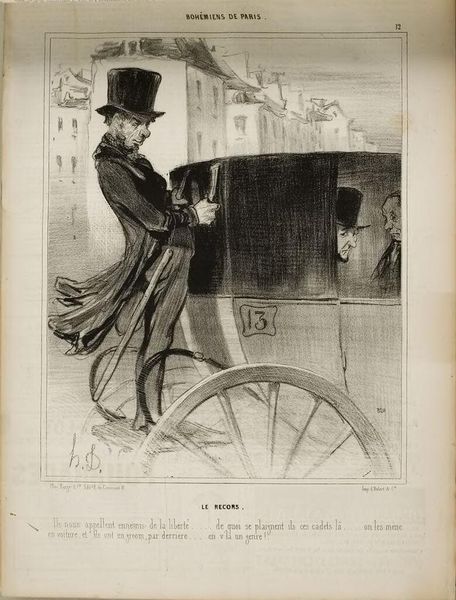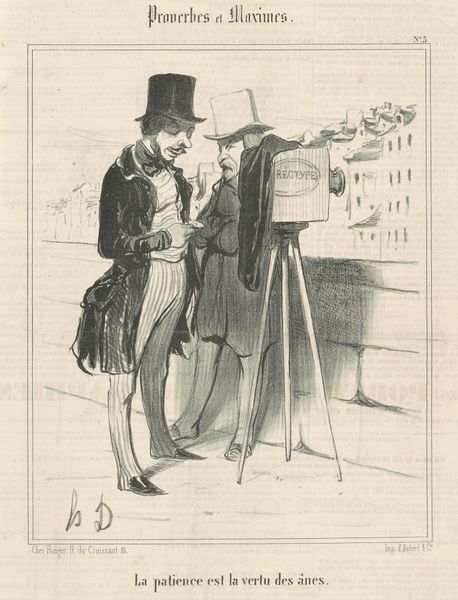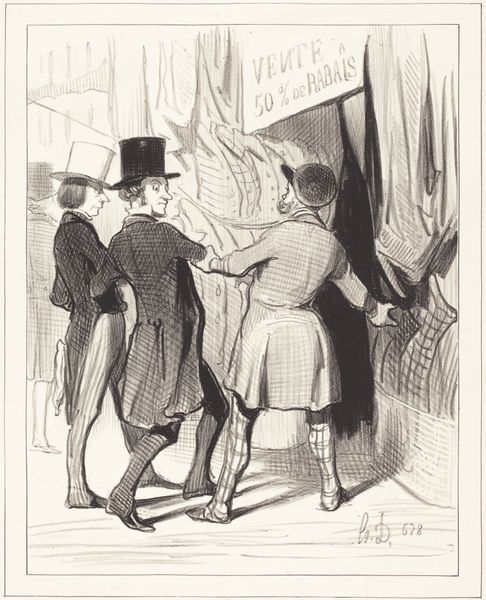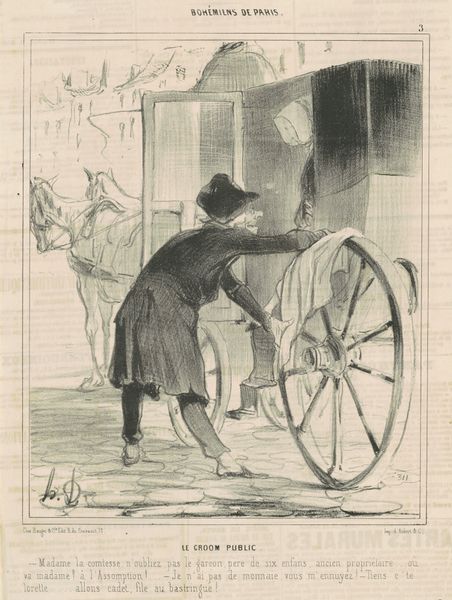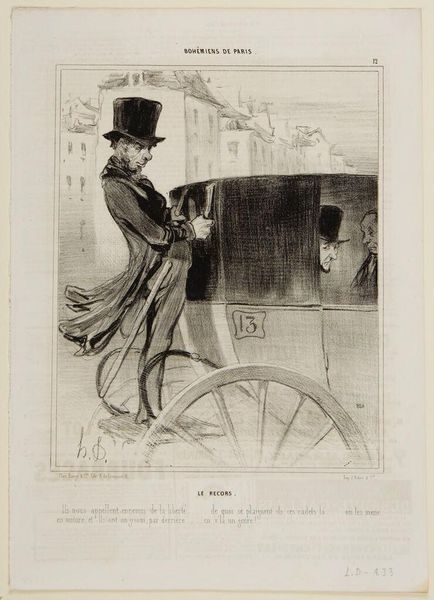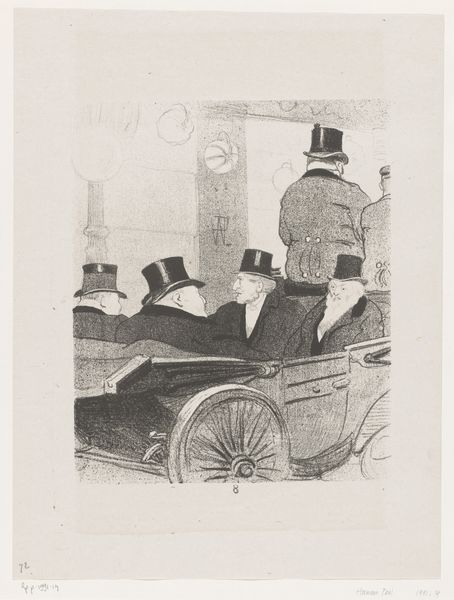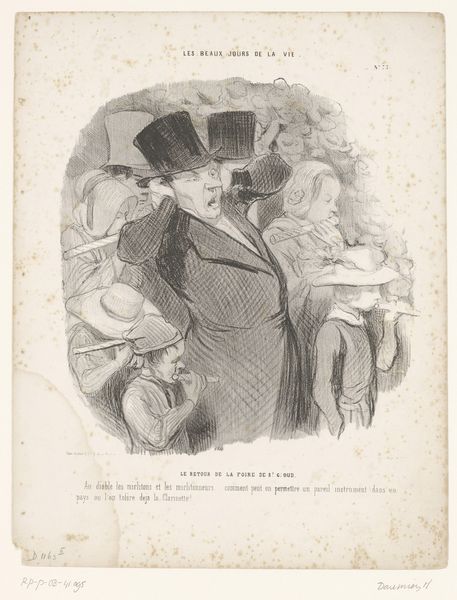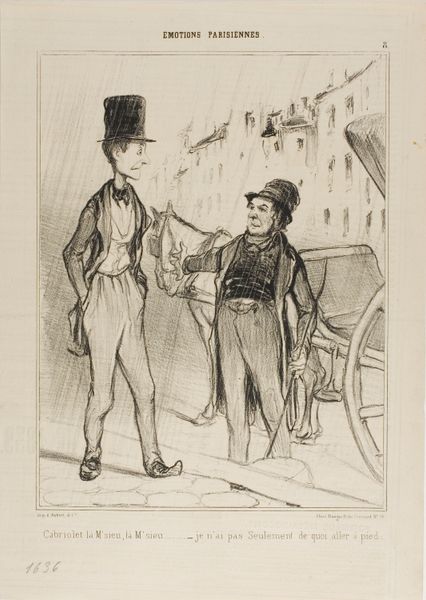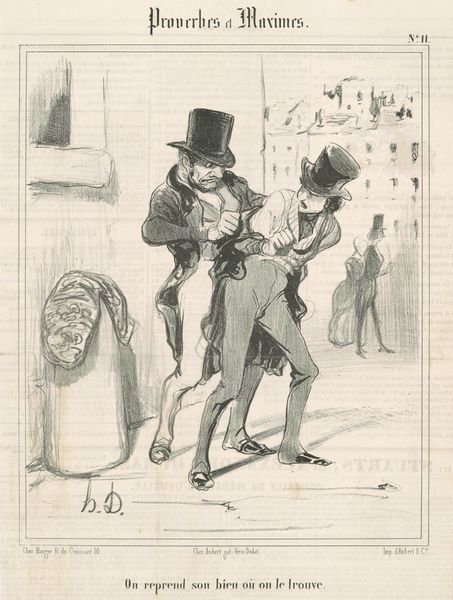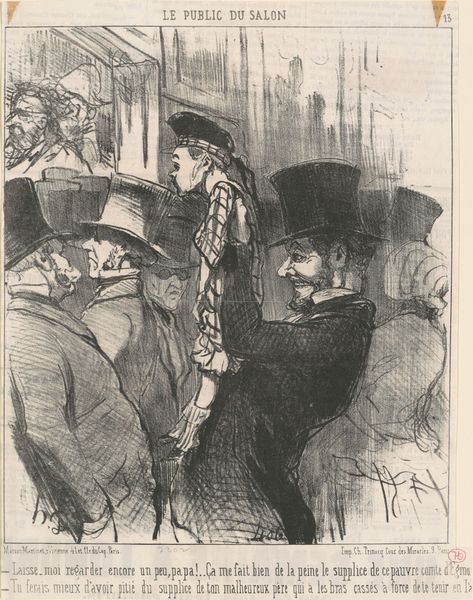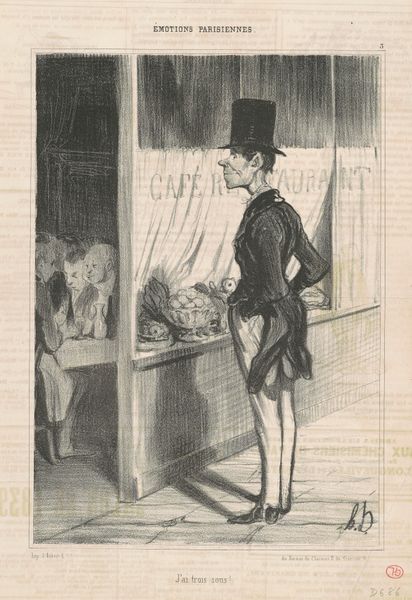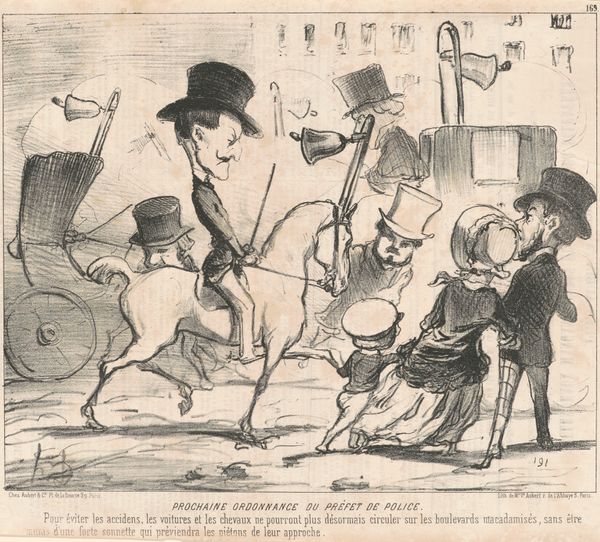
lithograph, print
#
lithograph
# print
#
caricature
#
old engraving style
#
figuration
#
romanticism
#
line
#
genre-painting
Copyright: National Gallery of Art: CC0 1.0
Curator: Honoré Daumier's lithograph, "Le recors," from around the 19th century, jumps out at you immediately with its sharp lines and the rather absurd figure of the groom. What is your impression, initially? Editor: Stark. The contrast of light and dark really punches you. But it’s also oddly delicate in its execution. All those tiny lines to build up the image…it gives it a vibrating, energetic feel, almost like pent-up frustration, visually humming. Curator: Indeed. The frantic lines create such dynamism. I find myself wondering about the social commentary that's packed into such simple execution. Look at the slight figures in the carriage, and then the man standing to the left, outside. Editor: The top hats! Status, right? They loom almost like dark towers. It’s a visual signifier—the hierarchy is impossible to miss. There’s a bit of humor in their inflated height versus the rather pinched expressions, but the darker meaning sits with me too. They appear as almost lifeless as dolls or the horses they ride on. Curator: Daumier excelled at distilling complex social criticisms into a single, impactful image, especially in pieces intended for dissemination through printed periodicals. Note, also, that the entire city landscape beyond the cab melts almost into oblivion, to underscore the elite bubble occupied by the figures in the carriage. It is the background to this main event. Editor: Absolutely. It's that bubble, and those tiny figures contained within, versus the dynamism, almost frantic energy you pointed out, and a dark, smudged kind of presence to this man, it looks like some confrontation. And who or what the recors refers to seems important to decode here. Curator: It might refer to an official tasked with enforcing orders or perhaps seizing goods; given Daumier's politics, it's probably satirical! The social commentary stings even through time. And for a medium supposedly tied to reproducible editions, don't you think it seems wonderfully handmade and utterly singular? Editor: Yes! Almost like it sprung up on the spot from the frustrations of a sharp-eyed witness. What strikes me most now is how relevant those frustrations feel. It makes me want to examine my own “bubble," or the world in which I live now, today. How about you? Curator: Similarly, its persistent power and vitality convince me that Daumier continues to act as our contemporary, making us rethink the way we read each image of supposed daily life.
Comments
No comments
Be the first to comment and join the conversation on the ultimate creative platform.
